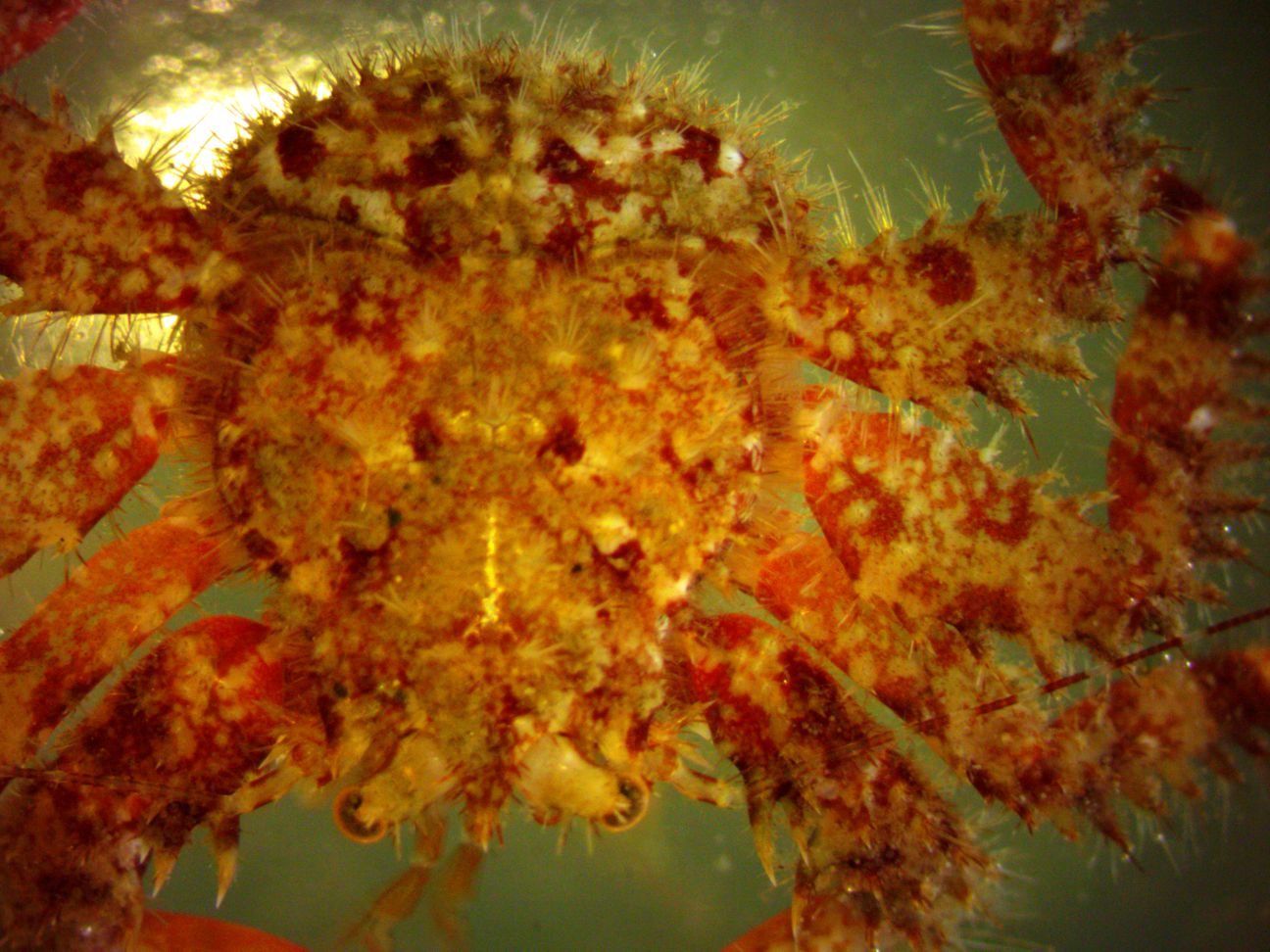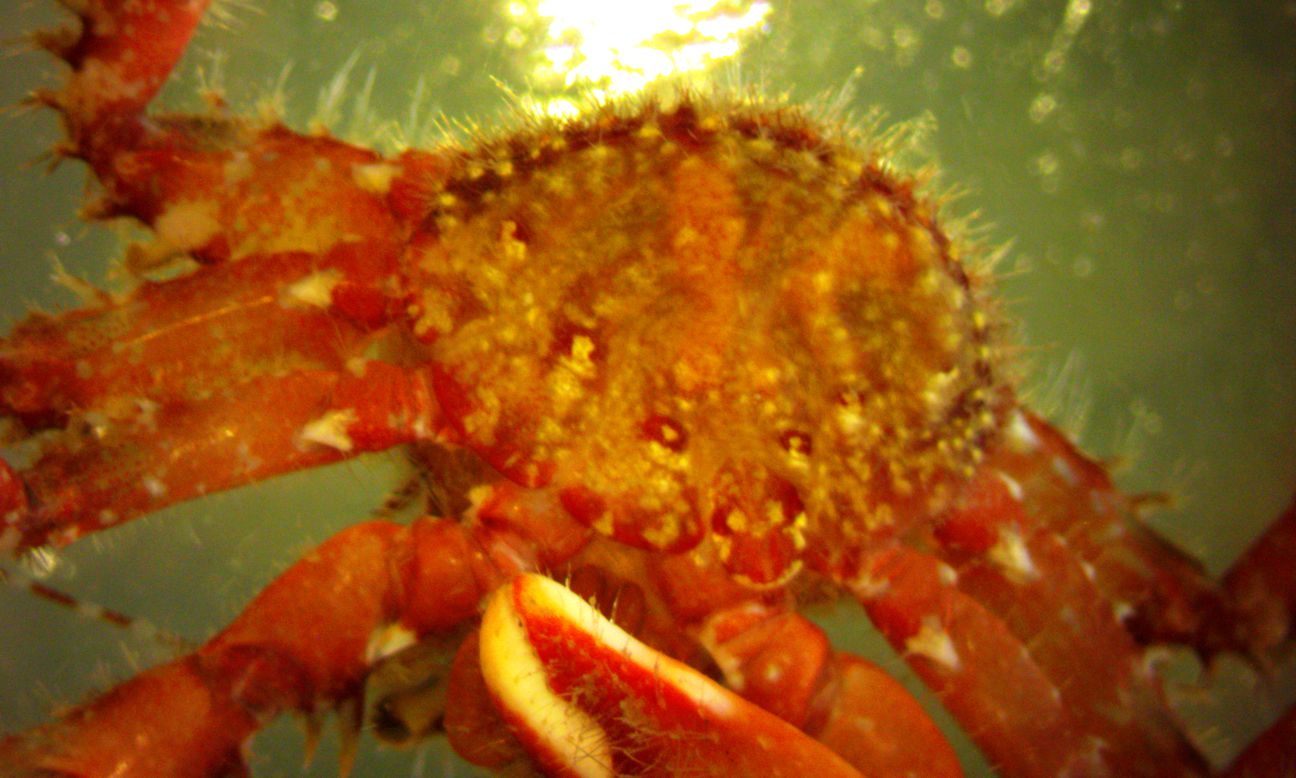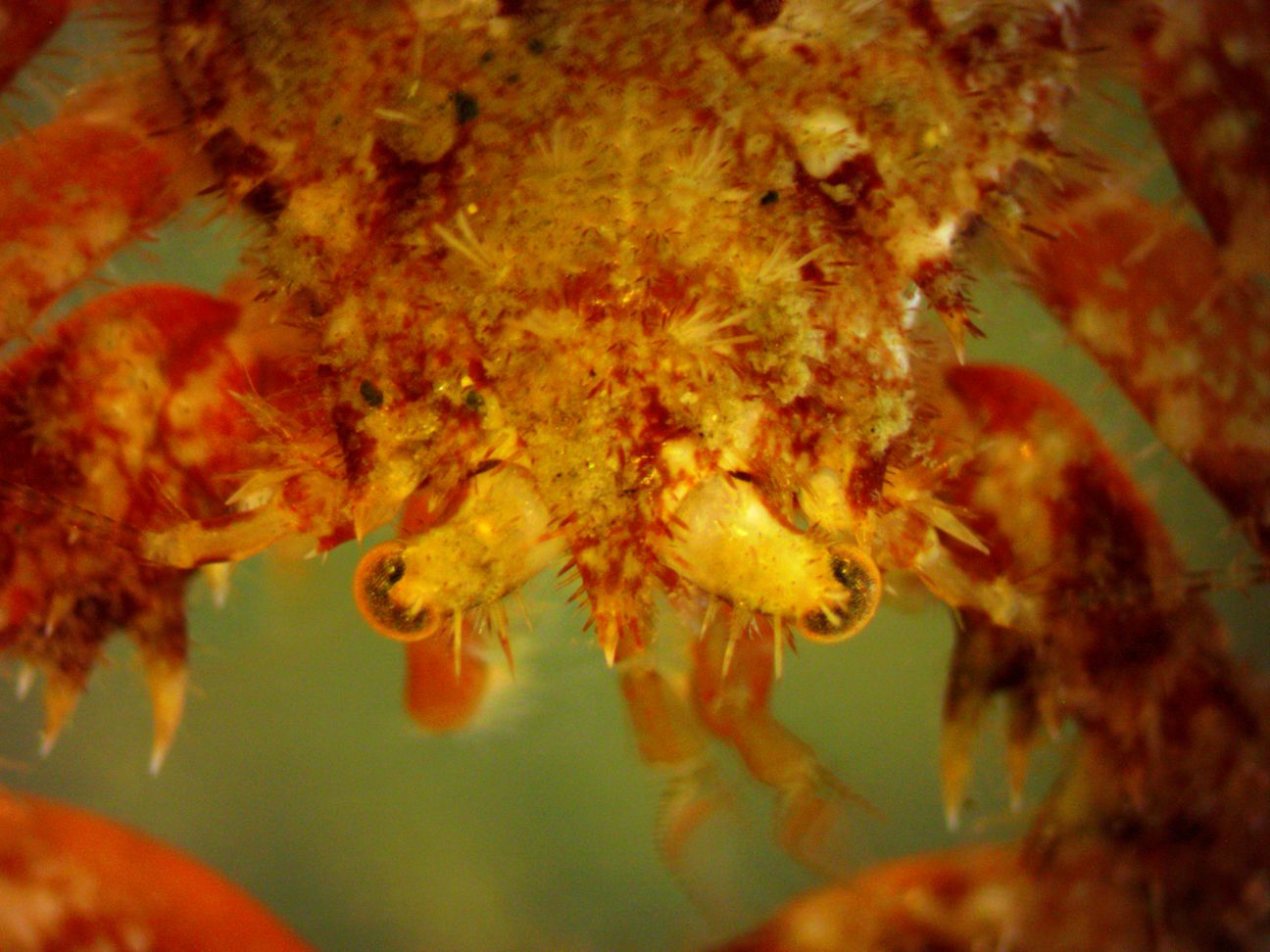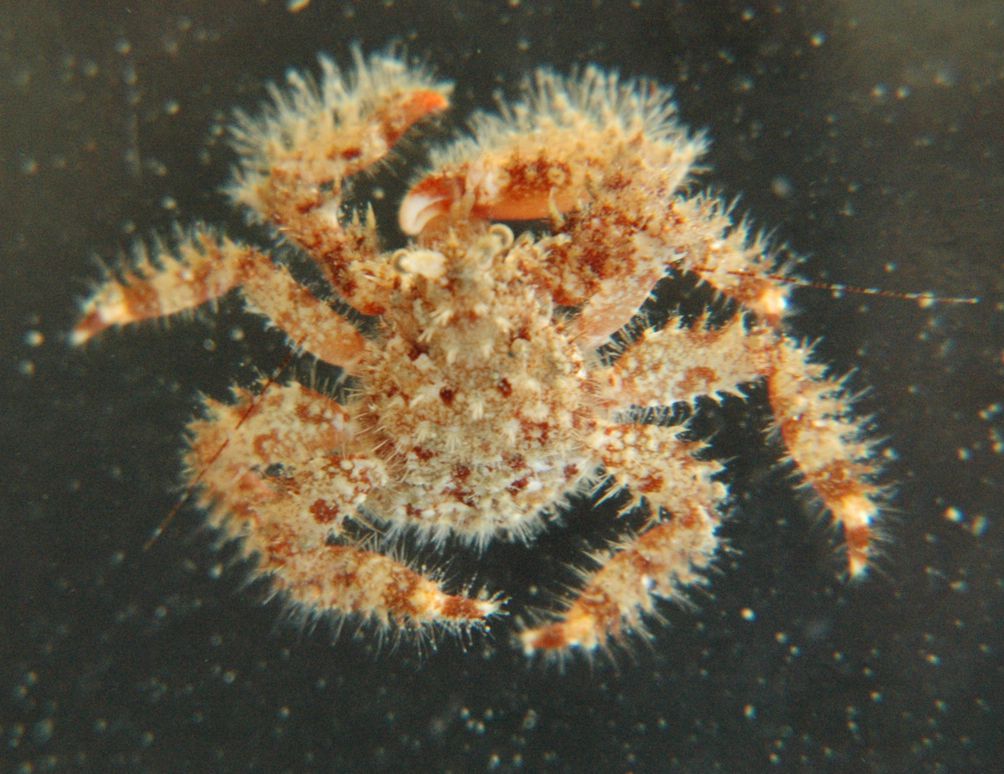Description: Like all Lithodid crabs, The first pereopods are chelate, the fifth pereopod is reduced, the abdomen is folded under the thorax, and uropods are absent. Acantholithodes hispidus has a thick, soft abdomen which is not tightly held against the underside of the thorax (photo). The abdomen is calcified only at the base, but has many small setose spines. Both the upper and lower margins of the pereopods are lined with setose spines. The chelipeds are of unequal size and covered with setose spines. The right cheliped is usually the larger one. The dactyl of the cheliped is shorter than the palm of the propodus. The carapace is flat and heart-shaped or pear-shaped, widest just behind the middle, and both the body and the legs are covered with stout spines and hairs (setae). The spines along the margins of the carapace are larger than those dorsally. The branchial regions of the carapace are slightly depressed. The rostrum is covered with stout spines along its entire length (photo). The eyestalks are light brown with dark brown stripes, and the cornea of the eye is orange with a black pigment spot. Overall color brown, red, and white with reddish-orange chelae that have white molar-like 'teeth'. Most of the red or orange color is on the spines. Carapace of males to 7.5 cm wide, females to 50 mm.
'Acantho' means "spiny" and 'hispid' means "hairy".
How to Distinguish from Similar Species: This appears to be the only species in its genus anywhere in the world. Hapalogaster mertensii and H. inermis have similar shape, soft abdomen, and spiny carapace/legs but there are no spines on their rostrum. There are several other local lithodid crabs which are hairy or spiny, such as Phyllolithodes papillosus and Rhinolithodes wosnessenskii, but none of these other lithodid crabs has the soft abdomen which is not held tightly under the thorax. Placetron wosnessenskii has a soft abdomen but its surface is scale-like rather than spiny.
Geographical Range: Bering Sea to central California (but apparently rare in the southern part of the range--Morris et al. (1980) and Carlton (2005) do not even mention it.
Depth Range: Intertidal to 164 m (usually subtidal).
Habitat: Sandy, muddy, or rocky substrate; often on vertical rock walls.
Biology/Natural History:
This species
eats shrimp and will often enter shrimp traps.
| Return to: | |||
| Main Page | Alphabetic Index | Systematic Index | Glossary |
References:
Dichotomous Keys:Jensen, 2014
Kozloff, 1987, 1996
Wicksten, 2009
General References:
Gotshall,
1994
Harbo,
2011
Hart,
1982
Jensen,
1995
Jensen,
2014
Lamb
and Hanby, 2005
Scientific Articles:
Web sites:
General Notes and Observations: Locations, abundances, unusual behaviors:

This view of the dorsal carapace shows the numerous spines both on
the carapace
(with larger spines around the margins) and on the legs and abdomen.

This view of the underside shows the soft abdomen
with setose
spines. The abdomen
is not held tightly under the thorax.

This closeup view of the face shows the rostrum
which is covered with spines its entire length.
Authors and Editors of
Page:
Dave Cowles (2014): Created original page
CSS coding for page developed by Jonathan Cowles (2007)
Salish Sea Invertebrates web site provided courtesy of Walla
Walla University
